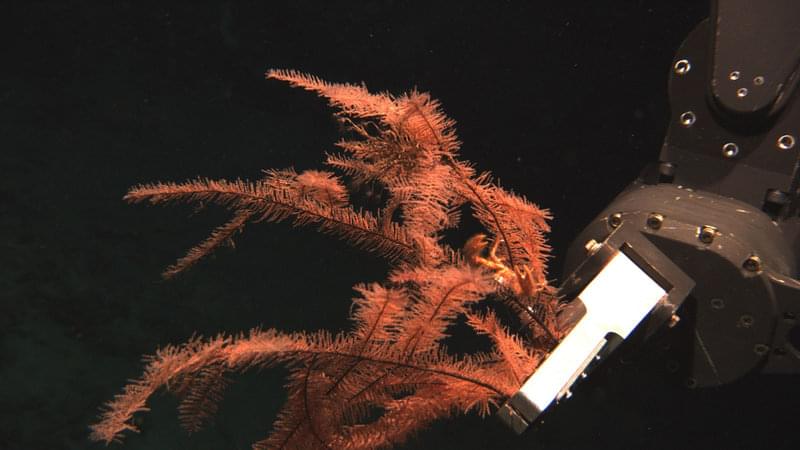
By Dannise V. Ruiz - Pennsylvania State University
October 26, 2010
Approximately 230 species of black coral (Antipatharia) are distributed from shallow (5m) to deep waters (8600 m) around the world. At least 20 of them have been reported in the Gulf of Mexico. Antipatharians, are members of the phylum Cnidaria, which includes corals, anemones and jellyfishes. Cnidarians have multiple reproductive strategies that vary depending on the species; cnidarians can reproduce sexually or asexually, be hermaphroditic or comprise separate sexes, and they may release their gametes into the water column or brood their larvae. Sexual reproduction results in a motile planula larvae, but some antipatharians have crawl-away larvae, meaning that the larvae do not stray far from their parent colony, while other species produce swimming larvae. On appropriate substrates larvae will settle and become a polyp. Asexually produced larvae have been documented in black corals, and polyp “bail-outs”, or polyps produced by expulsion from the parent colony, are also known. Like other members of the Hexacoralia, the antipatharian polyp has six tentacles, but unlike their relatives the scleractinians, antipatharian’s skeletons are internal, and their polyps cannot withdraw into the oral cavity.

The Jason ROV’s robotic arm collects several stalks of black coral from the seafloor. Dannise Ruiz is currently studying three black coral populations on the second leg of the expedition. Image courtesy of Lophelia II 2010 Expedition, NOAA-OER/BOEMRE. Download larger version (jpg, 844 KB).
Black corals are not black: when alive they have shades of white, green, yellow and red. Their name instead derives from their dark proteinaceous skeletons, formed from chitin and gorgonin. It is for their skeleton that black corals are sought after by humans. In some cultures black corals were used as medicine and charms to ward off evil and injuries, the name Antipatharia means against suffering. Today, black coral is harvested for the jewelry trade, and although listed in the Convention on International Trade in Endangered Species (CITES), black corals are still heavily harvested in places throughout the Caribbean and Pacific resulting in decimation of most shallow water populations.
Many black coral fisheries claim to be sustainable due to the notion that deep populations may be healthy and will replenish the impacted populations. However, the few studies on population connectivity of black corals suggest very limited exchange between neighboring populations. Lack of connectivity may be influenced by limited larval dispersal. Some antipatharian species have crawl away larvae, meaning the larvae do not travel far from the parent colony. Other antipatharians produce swimming larvae, but oceanographic patterns may limit dispersal.
Another argument used to support black coral fisheries is that the harvested “trees” are the biggest, therefore older ones that had reproduced already. But such management techniques designed for fish may not apply to corals. Most corals need to reach a minimum size before reproduction occurs, thus a large coral colony may still be sexually immature. Studies suggest black corals grow slowly (<10 mm/yr) and reach sexual maturity at very old age. In fact, black coral colonies are the oldest living animals on Earth; recent studies have dated black coral colonies that are thousands of years old, with the oldest being over 4000 year old!
In the deep sea, where hard substrates are limited, the three-dimensional structure of the black coral colonies provides a habitat and refuge for a wide variety of organisms. Copepods, crabs, barnacles, shrimps, fish and brittle stars are among the animals that live on black corals. Some of these associations are species-specific, highlighting the importance of black corals as “ecosystem engineers”. As part of the Lophelia II expedition we are interested in studying the population connectivity of Leiopathes glaberrima in the Gulf of Mexico. Leiopathes glaberrima is globally distributed at a depth range of 156 to 549 meters, and is one of the black corals that acts as an ecosystem engineer. Learning about its population connectivity and genetic variation will help to manage populations of black coral in the Gulf of Mexico.